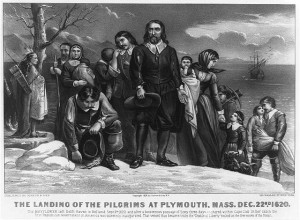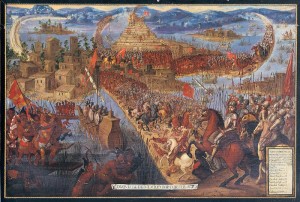Examples from in-class writing prompt on Tuesday, 9/24.
Example 1
In England there were huge revolts which brought forth the English Reformation. The English and Catholic Church split. This caused many people to come to the Americas to escape religious persecution. There were numerous groups: Pilgrims (Puritan separatists) in Plymouth, Calvinists, Quakers, and other Puritans. These colonies differed from the Southern ones because they were more focused on creating societies rather than profit. This can be seen in John Withrop’s account. He wanted to create a model society, “a city upon a Hill,” which would show England how successful they were. These colonies also did not have the same crops like tobacco. They traded pelts, timber, and other items with the natives. The Navigation Acts also came about later on, promoting the well being of the mother country, England.
Example 2
In the northern colonies some important aspects of life were religion–mostly of the Puritan kind, family, and the sorts of relations that were had with the Native people there as shown by the way that the Pilgrims were saved by the Wampanoag Indians. A difference from the Southern colonies was that instead of having mostly just men who were coming as indentured servants, these people were mostly entire families that had paid their way over in the case of the Puritans at least.




